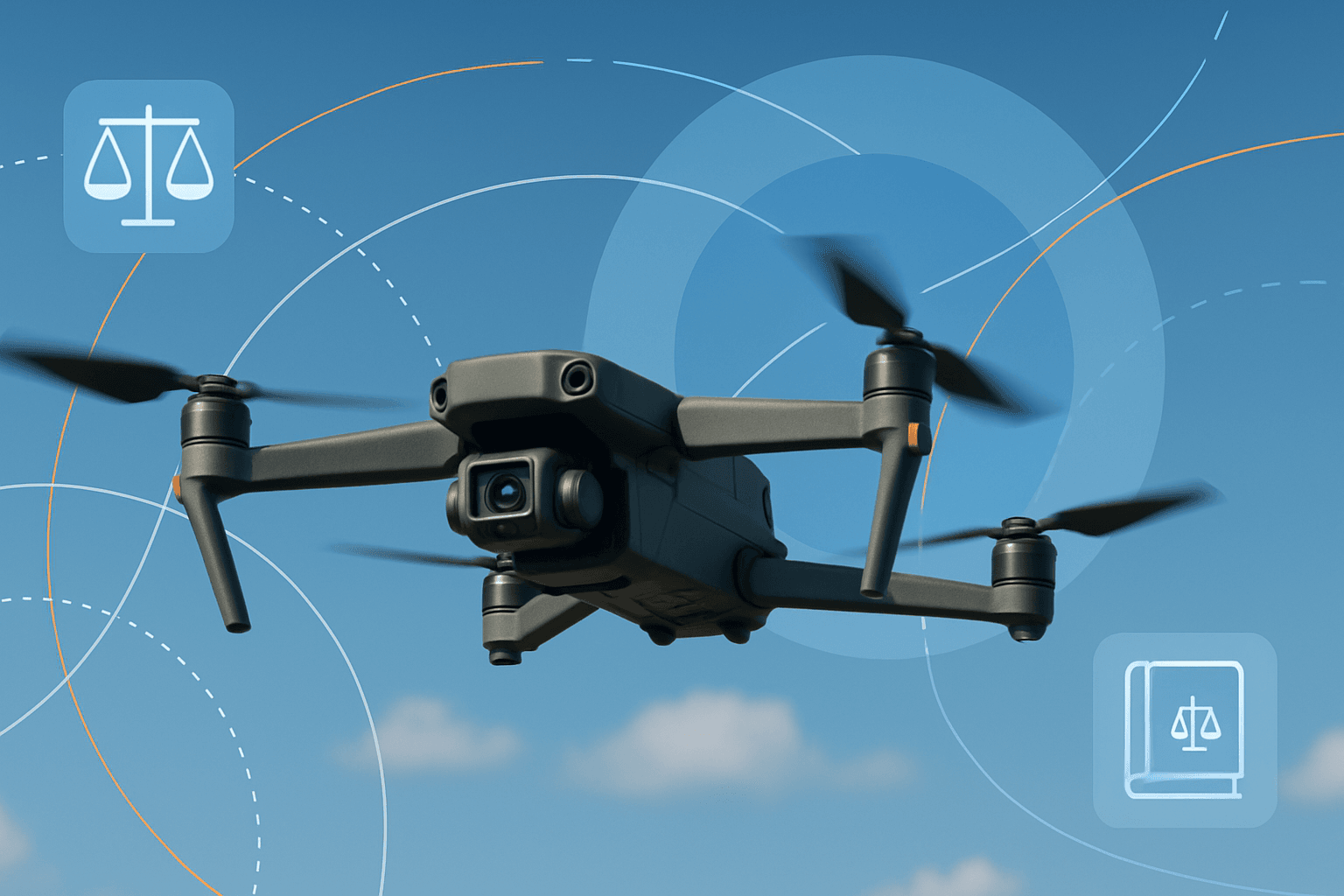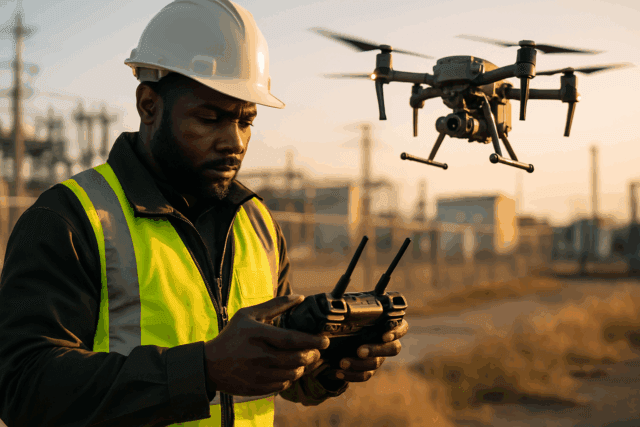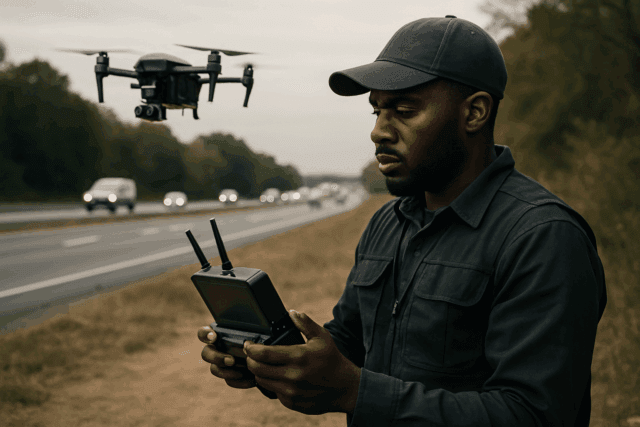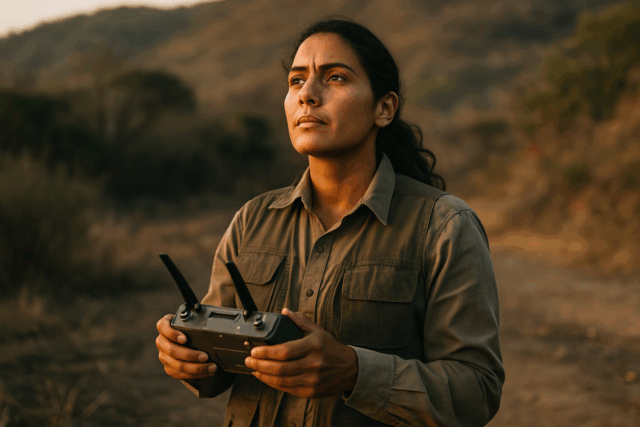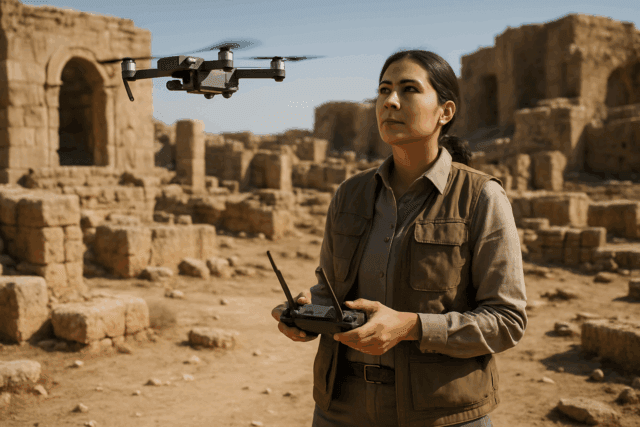Flying a drone can be an exhilarating experience, offering unique perspectives and opening up new possibilities for both recreational and commercial use. However, it’s crucial to understand and comply with the legal framework surrounding drone operation to ensure safety and avoid potential penalties. This guide provides a comprehensive overview of drone laws in the UK as of 2025, covering registration, licensing, operational restrictions, and recent regulatory updates.
Is Flying a Drone Legal in the UK?
Yes, flying a drone is legal in the UK, but it’s essential to be aware of and comply with the regulations set forth by the Civil Aviation Authority (CAA). These regulations are designed to ensure the safety and security of the public and other airspace users while allowing the drone industry to thrive.
UK Drone Laws: Key Regulations
Here’s a breakdown of the key drone laws and regulations in the UK:
1. Registration and Licensing
Operator ID
If you are responsible for a drone or model aircraft (owning it), you must register with the CAA and obtain an operator ID. This applies to drones weighing between 250g and 20kg.
- Age Requirement: You must be 18 or over to register for an operator ID. If you’re under 18, a parent or guardian can register on your behalf.
- Fee: There is a fee of £10.33 (or £11.79, depending on the source) for the operator ID, which is valid for 1 year.
- Labeling: You must label all your drones with your operator ID. The same ID can be used for all your drones.
Flyer ID
If you intend to fly a drone (even if it’s not yours), you must pass an online theory test and obtain a flyer ID.
- Age Requirement: Anyone aged 13 or over can obtain their own flyer ID. Those under 13 must have a parent or guardian present while taking the test.
- Test: The theory test has 40 multiple-choice questions, and the pass mark is 30. It covers topics such as flight height, insurance, privacy, and operating near airports.
- Validity: Your flyer ID is valid for 5 years.
- Cost: Obtaining a Flyer ID is free.
Exemptions: You do not need to register if you only use a drone or model aircraft that weighs below 250g and is a toy or does not have a camera.
2. Operational Categories
Drone operations in the UK are categorized into ‘open’, ‘specific’, or ‘certified’, according to increasing levels of risk, size/weight, and regulation.
Open Category
This category is for low-risk operations and is further divided into subcategories: A1, A2, and A3.
- A1: For drones under 250g, allowing flight over people (but not open-air assemblies). Drones with a MTOM of 500g or less may be flown in A1 under ‘Transitional’ rules, but may not be deliberately flown overhead people and the pilot must hold an A2 CofC.
- A2: For drones less than 2kg, requiring a 50-meter distance from people and an A2 Certificate of Competency (A2 CofC).
- A3: For larger aircraft, requiring flights far from people (no flights within 150m horizontally of residential, commercial, industrial, or recreational areas).
Specific Category
This category is for operations that present a higher risk than those in the open category.
- Operations in this category require an operational authorization from the CAA, based on a Specific Operations Risk Assessment (SORA).
- Pilots may need a General Visual Line of Sight Certificate (GVC) to apply for operations in the Specific Category.
Certified Category
This category is for the highest-risk operations, such as transporting people or dangerous goods. It requires certification of the drone and the operator.
3. General Flying Rules
Regardless of the category, several general rules apply to all drone flights in the UK:
- Maximum Height: Drones must not be flown higher than 120 meters (400 feet) above the surface.
- Visual Line of Sight (VLOS): Pilots must maintain a visual line of sight with their drones at all times, without using visual aids like binoculars or telescopes.
- No-Fly Zones: Drones must not be flown within restricted airspace, such as near airports, military bases, prisons, royal palaces or nuclear facilities, without permission.
- Aerodrome Flight Restriction Zones (FRZ): It is illegal to fly any drone at any time within these restricted zones unless you have permission from air traffic control at the airport or, if air traffic control is not operational, from the airport itself. An aerodrome FRZ and RPZ(s) are contiguous irrespective of how mapping tools may portray them.
- Congested Areas: You may not fly a drone within 150 meters (492 feet) of any congested area or organized open-air assembly of more than 1,000 persons; or within 50 meters (164 feet) of any person, property, vessel, vehicle, or structure which is not under the control of the person in charge of the aircraft; following additional codes not to overfly 122 meters (400 feet) above the surface.
- Safety: You are responsible for flying your drone in a safe manner and must not endanger anyone or anything.
- Dropping Articles: You may not cause or permit any article or animal to be dropped from a small unmanned aircraft in a way that endangers persons or property.
- Alcohol and Drugs: Don’t fly if you’ve drunk alcohol or taken drugs.
- Privacy: Respect other people’s privacy, and know what you can and cannot do with photos and videos.
4. Insurance
Insurance is required for all commercial drone operations.
5. Key Changes to UK Drone Regulations in 2025
Several changes to UK drone regulations are being implemented in 2025, with full enforcement expected by 2026:
- UK SORA: In April 2025, the OSC methodology was replaced by UK SORA. For operators who want to carry out missions that are not covered by PDRA01, they will need to apply for an Operational Authorisation using UK SORA.
- Extension of Legacy and Transitional Provisions: The Department for Transport (DfT), in collaboration with the CAA, has extended legacy and transitional provisions for drones operating in the Open Category until January 1st, 2026.
- Drone Class Marking: Starting January 1st, 2026, the UK will implement drone class marking. Drones in the Open Category (for low-risk activities) will need to meet new safety and technical standards.
- Remote ID: The CAA is calling for all drones over 100 grams with a camera to have a remote ID.
6. Recent Updates from the CAA (May 8, 2025)
The UK CAA has released a catalogue of final policy recommendations in response to the Review of UK UAS Regulations consultation, focusing on:
- Simplifying regulations for users.
- Improving knowledge of UAS recommendations.
- Ensuring UAS have an effective minimum level of safety, security, and performance.
- Mitigating the likelihood of UAS posing safety and security issues.
Some of the proposals include:
- Renaming operational subcategories to ‘Over’, ‘Near’ and ‘Far’.
- Removing exclusions for ‘Toy’ UAS from registration requirements.
- Requiring pilots flying UAS weighing 100g or more to take the free online Flyer ID test.
- Introducing UK-specific product marking for class-marked UAS, ie replacing the C0 label with UK0 and so forth.
- Allowing EU class-marked UAS to operate in the Open Category, in the same subcategories as their UK equivalents, prior to January 1, 2028.
Where Can You Fly? Finding Safe and Legal Locations
Identifying safe and legal locations for drone flying is crucial for responsible usage. Here are some guidelines:
- Publicly Accessible Lands: One of the safest places to fly a drone is on publicly accessible lands, such as those covered by the Countryside and Rights of Way (CRoW) Act.
- Legal Take-off and Landing Sites: Legally, you can take off and land a drone from public pathways, provided it is safe to do so and does not disturb other people.
- Use Caution Near Airports: You must stay at least 5 kilometers away from airport perimeters.
- Check for Local Restrictions: Always remain aware of any specific local rules that might restrict drone use in certain parts of these lands, especially those that are near protected wildlife areas or during specific times of the year.
Consequences of Breaking Drone Laws
As of 1 December 2019, anyone operating a drone that cannot prove they have registered and/or passed the online course will be considered breaking the law. The maximum fine is £2,000.
Resources for Drone Pilots
- CAA Website: The UK Civil Aviation Authority (CAA) website provides comprehensive information on drone regulations, guidance, and registration: https://www.caa.co.uk/
- Drone Safe Register: https://dronesafe.uk/
- Drone Assist App: The CAA and air traffic control body National Air Traffic Service ( NATS ) created a useful Drone Assist App to help individuals understand their responsibilities.
By staying informed and adhering to these regulations, drone pilots can enjoy the benefits of this technology while ensuring the safety and well-being of everyone.

